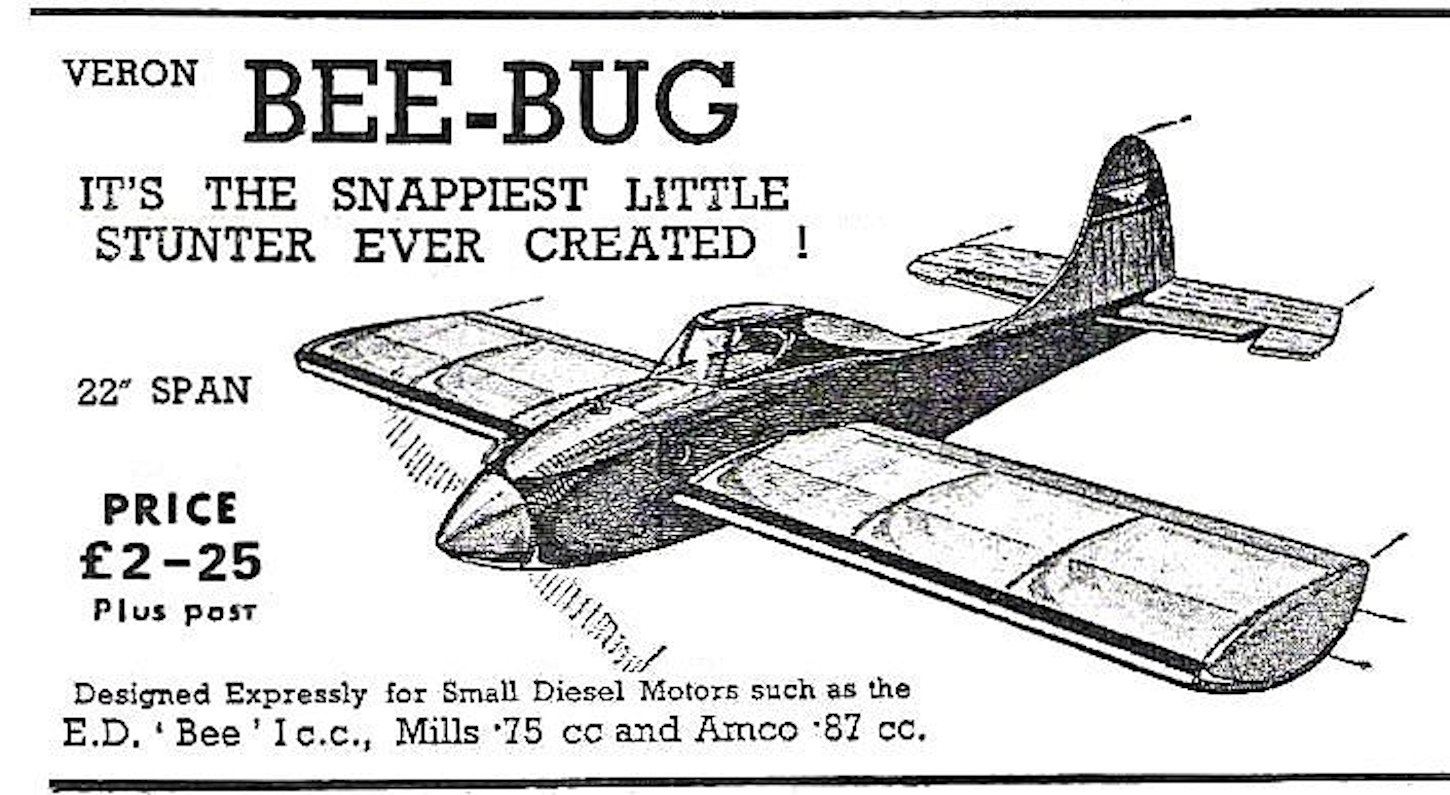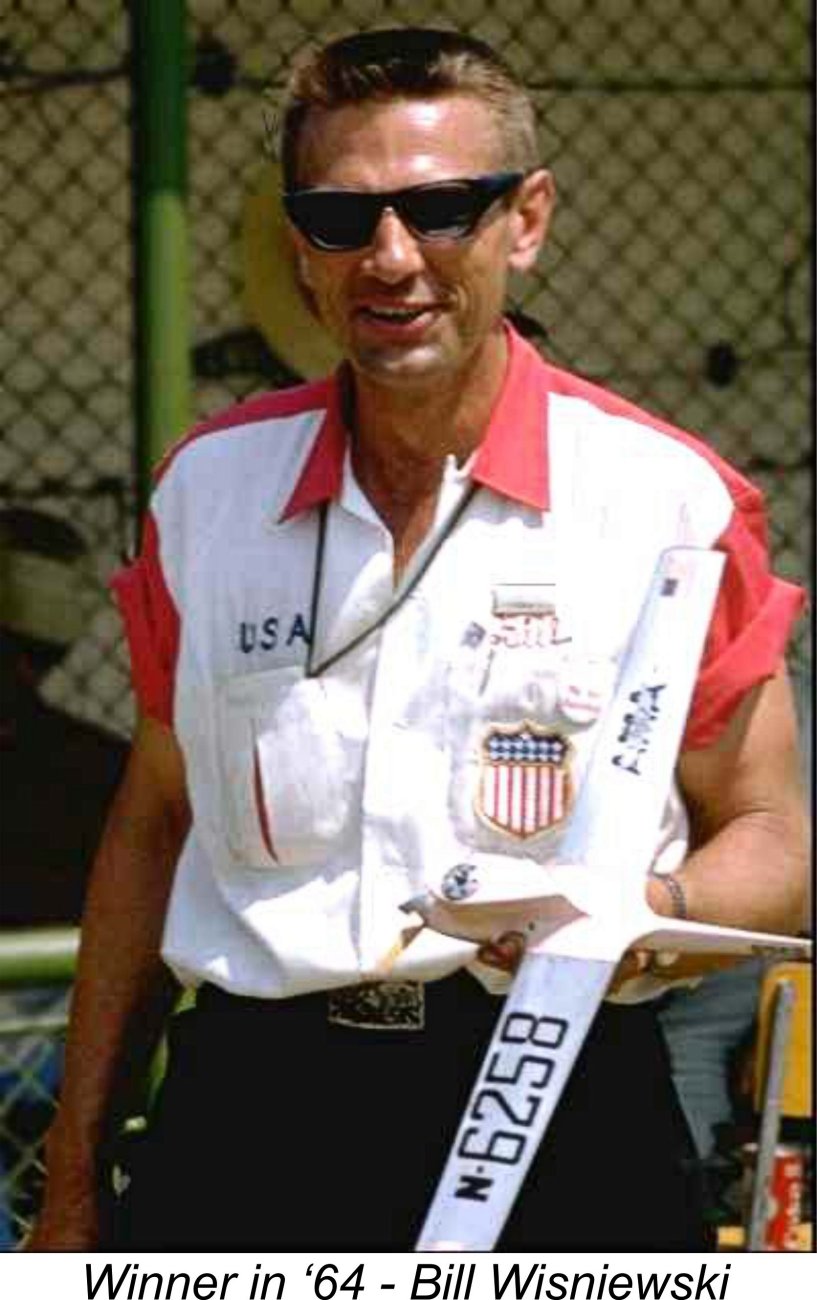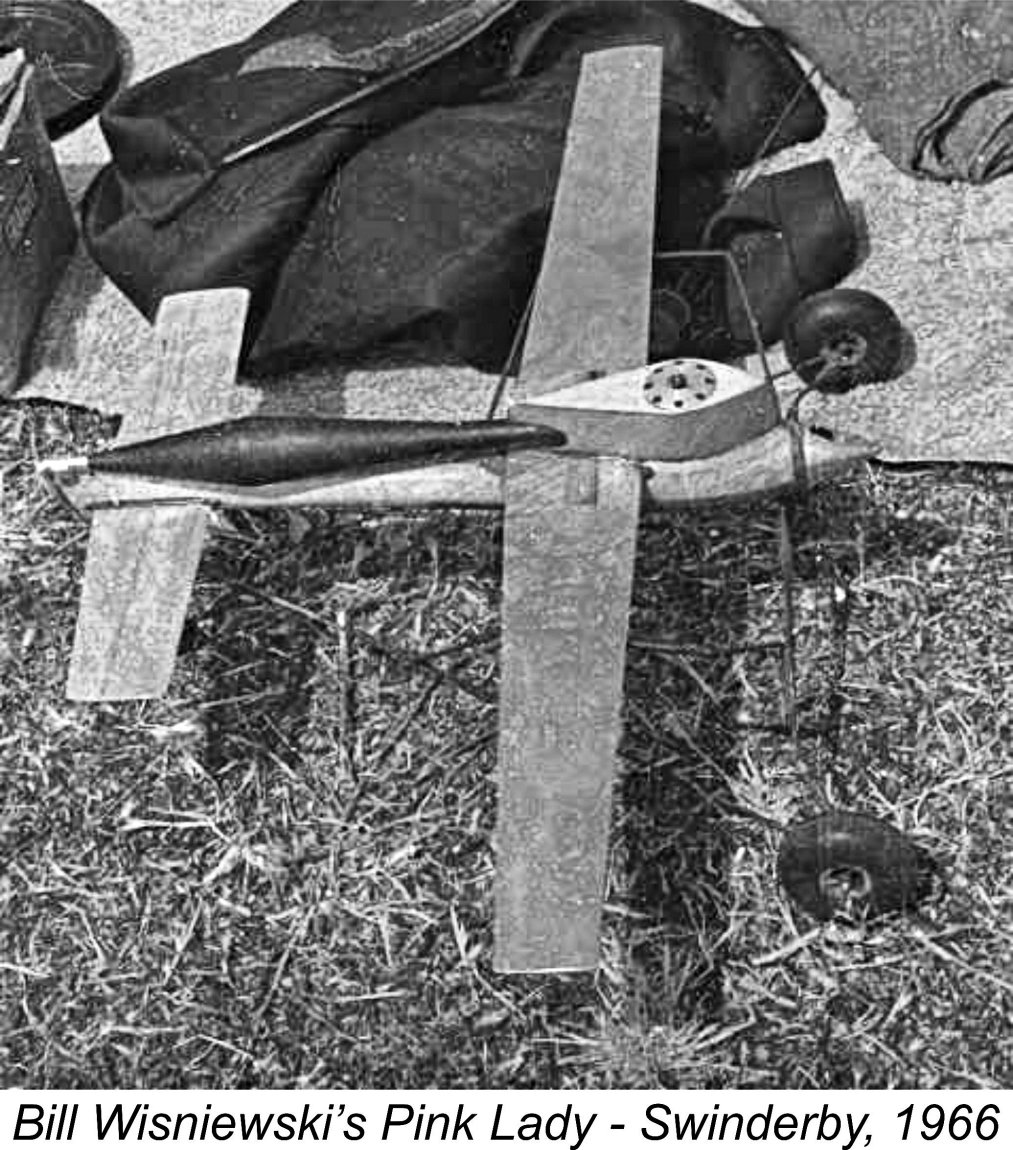
|
|
"Fir-Kinell" - Nostalgia Highlights By Ken Croft
That experience was my very first encounter with aeromodelling and model engines. It was responsible for the hobby that has been with me for almost seventy years and it will be one of my two abiding memories of model flying. When the other memorable event happened, I was well familiar with the vernacular, and the expression was delivered in unison by the assembled multitude, including myself. I have little doubt that the memory will join with the earlier one in accompanying me to my grave.
Today's piped 2.5 cc competition glow motors produce in excess of 3 BHP and the current FAI world control line speed record is over 200 mph on straight fuel with no nitromethane. In 1966 the FAI world speed record for 2.5 cc models on straight fuel stood at a fraction less than 140 mph. Like all sporting records, it had been creeping up each year by only the odd mile per hour. The speed models of the day were tiny. The engines were run up to almost full revs on the ground; they quickly leapt into the air and promptly did the business.
The 1966 world control line championships were held in England at RAF Swinderby in Lincolnshire. As a "professional" speed-watcher, the speed event was my particular interest. The grapevine chat was indeed very interesting. The USA team of Chuck Schuette, Roger Theobald and Bill Wisniewski had been practising "under wraps" on a nearby US airbase for the week prior to the championships, and the buzz was that terrific speeds had been obtained. When Wisniewski came out to fly at the Swinderby event, his model was like nothing seen before. Christened the “Pink Lady” and painted accordingly, it was much larger than the tiny models that were then generally popular for speed flying, and it had an exhaust pipe as long as the model, said to be a "tuned pipe". Such a unit had never before been seen on a model engine in England. A large crowd had gathered in expectation of a very high speed run. The TWA engine was started, but it could barely achieve any decent revs at all. Seemingly in desperation, the model was released on its dolly with the engine rough and blowing lots of smoke. It could hardly pull itself round on the ground, let alone fly. After several laps on the ground, again apparently in desperation and seeking to avoid becoming a laughing stock after such high expectations, the hapless Wisniewski yanked the model round a bit faster and dragged it into the air. It barely flew at all, but staggered around the circle nose high and blowing smoke.
Then it happened. Wisniewski whipped the model up to speed, the pipe came on song and the motor produced a noise like we had never heard in our lives. The speed was unbelievable. "Fir-Kinnel" was the almost audible expression of disbelief uttered under the collective breath of the crowd. Some slight idea of what we experienced may be seen in this video. When the watches had been compared and the speeds computed from the charts, in that one flight Wisniewski had raised the FAI world speed record by 20 mph to just under 160 mph! In athletic terms that was the equivalent of raising the high jump record by one foot or knocking thirty seconds off a four-minute mile!! And how did Wisniewski celebrate his win? By gleefully taking the trophy home and keeping his winning secrets to himself? Not a bit of it. He gathered all those interested and held a small symposium detailing his tuned pipe and engine developments, handing out full design details to all who attended. Sportsmanship at its very finest. Different days indeed......... For me, nostalgia is not about puttering petrol models, even though I enjoy them immensely. It's about Kenny Baines and his E.D. Bee, and the great Bill Wisniewski unveiling his piped Pink Lady. Those really were the days. _________________________________ Article © 2019 by Ken Croft, Gironde, Nouvelle Aquitaine, France First published November 2019
|
| |
 Had I known of such an expression of surprise at the tender age of ten or twelve years, the sound and sight of Kenny Baines and his big brother flying an
Had I known of such an expression of surprise at the tender age of ten or twelve years, the sound and sight of Kenny Baines and his big brother flying an  This piece is really about the second event, but to appreciate the situation you must cast your mind or your imagination back to the time prior to 1966. Model engines were not as developed as they are today. The 0.36 BHP tuned Oliver Tiger was probably still the most powerful commercial 2.5 cc diesel, while certain 2.5 cc competition glow-plug motors were then reaching towards the 0.50 BHP range. In unrestricted competitions, glow engines ran on as much nitromethane as you could afford to burn, although by that time FAI rules required the use of straight fuel in International competitions under their jurisdiction. Silencers were increasingly appearing on British flying fields, but tuned pipes had never yet been seen on model engines in England at the time. Kevin Lindsey had been quietly conducting experiments in England beginning in late 1965, but his efforts remained below the radar.
This piece is really about the second event, but to appreciate the situation you must cast your mind or your imagination back to the time prior to 1966. Model engines were not as developed as they are today. The 0.36 BHP tuned Oliver Tiger was probably still the most powerful commercial 2.5 cc diesel, while certain 2.5 cc competition glow-plug motors were then reaching towards the 0.50 BHP range. In unrestricted competitions, glow engines ran on as much nitromethane as you could afford to burn, although by that time FAI rules required the use of straight fuel in International competitions under their jurisdiction. Silencers were increasingly appearing on British flying fields, but tuned pipes had never yet been seen on model engines in England at the time. Kevin Lindsey had been quietly conducting experiments in England beginning in late 1965, but his efforts remained below the radar. Bill Wisniewski of the USA had won the 1964 world control line speed championship using his then-revolutionary but un-piped Schnürle-ported "Wart" engine. The development of that unit had been forced upon him by Super Tigre maestro Jaures Garofali's
Bill Wisniewski of the USA had won the 1964 world control line speed championship using his then-revolutionary but un-piped Schnürle-ported "Wart" engine. The development of that unit had been forced upon him by Super Tigre maestro Jaures Garofali's  That was it, we all thought? Bloody cocky Americans with all the bull about high speeds! Is that the best they can do? Ho, ho, ho, what a pack of plonkers!
That was it, we all thought? Bloody cocky Americans with all the bull about high speeds! Is that the best they can do? Ho, ho, ho, what a pack of plonkers!